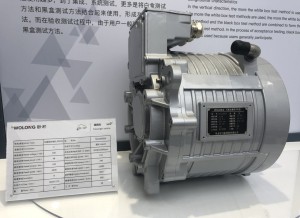An air bearing for electric motor is an innovative non-contact bearing that uses gas (usually air or nitrogen) as a lubricant to support moving parts. Unlike traditional mechanical bearings that rely on solid contact surfaces, air bearings operate on a unique principle that utilizes the buoyancy of compressed air. This design allows for extremely high precision and friction-free movement, making air bearings ideal for applications requiring minimal wear.
The working principle of air bearings is simple but very effective. Compressed air is injected into the space between two relatively moving surfaces through small holes or gaps in the bearing surface. The injected air creates a film or cushion that separates the surfaces so they can slide against each other without direct contact. The absence of solid contact eliminates friction, which not only increases the efficiency of the system but also greatly reduces the risk of mechanical failure due to wear.
One of the most significant advantages of air bearings is their ability to achieve extremely high precision. In industries such as semiconductor manufacturing, aerospace and precision machining, where even the slightest deviation can have catastrophic consequences, air bearings provide a reliable solution. The frictionless nature of air bearings also means they can operate at high speeds without generating heat, further extending their service life and reliability.
All in all, air bearings represent a cutting-edge technology that redefines the concept of motion support in mechanical systems of three phase electric motors. By utilizing compressed air to create a non-contact interface, they provide unparalleled precision, reduced friction and increased durability, making them the first choice for a variety of high-tech applications.
Post time: Jan-10-2025


